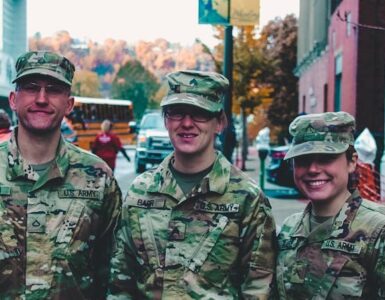After 26 years teaching science to students at the Paradise Valley Unified School District, Linda Coyle has focused her career on designing STEM curriculum and resources for schools across Arizona. She says that while plenty of schools are latching onto the idea of STEM, many of them have struggled to maintain programming that can really have a significant impact.
“One of the problems we had was once you get your STEM program up and running, how do you maintain it over the long-haul?” Coyle said.
That was the focus of a workshop Coyle hosted during the SciTech Institute’s 2019 STEM & Innovation Summit in September. Coyle says many schools claim they have “great STEM programs,” but often offer little to students beyond AP science courses or after-school clubs. Sometimes, she says, some teachers and administration members within a school may not even be aware of what their STEM curriculum looks like.
Setting the vision
The first step to sustaining a healthy STEM program, Coyle said, is for schools to figure out what level of STEM program they are currently running. A STEM Immersion Guide by the Maricopa County School Superintendent’s Office outlines four different levels of programs – Exploratory, Introductory, Partial Immersion and Full Immersion—and delineates what the indicators of success might look like for each type. The document enables schools to figure out what components may be missing from their existing STEM programming, Coyle said.
“Everyone at the school needs to have an understanding of what your STEM program is,” she said.
Just as important, she says, is that teachers and administration take time to “establish a common vision, mission and goals” for the school’s STEM program. This is important, she says, even if the existing program is only run by a few teachers.
“You can also have members from the community — your parents, and especially your students — and have a design team that can sit down and create what we call the strategic plan,” she said.
Once a school has agreed on the vision, Coyle said it’s crucial to make sure everyone involved is committed to continuously developing and tweaking the program – or, as she puts it, “getting everyone on the bus.” Coyle said teachers who are hesitant or resistant to working STEM into their classrooms will need to either change their perspective or teach at a different school.
“If there are people on your staff who are not on the bus, then it’s okay for them to get off and go to another school,” she said.
Keeping it relevant
Coyle says it’s also important that schools understand that STEM is about more than offering extra science classes or units for students.
“One of the biggest things we found with implementing STEM is that projects have to be hands-on, they have to be engaging, they have to be real-world, and they should involve something within the community — something tangible.”
This, Coyle says, is key to not only making the learning relevant, but also ensuring that students with disabilities or students who are learning English can still enjoy and participate in the programming.
“The great thing about [STEM] is that it’s the perfect tool for access and equity,” she said. “The hands-on, play portion of STEM is engaging for any child.”
Not all teachers might immediately be prepared to start executing those types of lessons out of the gate, Coyle said, which is why developing professional development plans for teachers is crucial. That could involve inviting subject matter experts into the school to train teachers on new technology or topics, or it could involve sending teachers to external training programs. Schools may even be able to use title funds to fund these sorts of opportunities, she said.
Regardless of how schools prepare their teachers, something Coyle emphasized as extremely important was keeping a physical record of any lessons, curriculum and resources used as part of a STEM program,
“Do yourself a favor and put it on paper… figure out some way of being able to share that,” she said. “It’s something that can be used across the state. I mean, why are we reinventing the wheel every year for teachers?”

Funding the program
STEM may conjure up images of expensive computer labs and robotics programs, but that isn’t necessarily always the case – nor can it be for schools without the appropriate funding. But that doesn’t mean that low-funded schools can’t have healthy STEM programs, Coyle said.
“Believe it or not, STEM can happen at the dollar store,” she said.
During another workshop at the STEM & Innovation Summit called “Stem on a Dime,” Al Pajak of local nonprofit Treasures 4 Teachers discussed some of the ways in which everyday objects can be used creatively in the classroom.
With a few CDs, a block of Styrofoam and a balloon, for example, students can create a balloon-powered “car” and learn about motion and forces. The CD cases themselves could be used as petri dishes for growing crystals. Even something as simple as plastic Easter eggs can be useful – these could be stacked in certain ways that could help students learn about Newton’s laws, Pajak said.
In addition to those sorts of free materials, Treasures 4 Teachers also sells low-cost STEM kits designed by a retired APS engineer, which have components like solar panels that can be reused across classes and lessons.
For teachers looking for additional funding or materials for their classrooms, Coyle suggested partnering with local businesses. She said Home Depot, Lowe’s, Wells Fargo and all major local grocery store chains in Arizona have some form of program designed to help teachers — that could include everything from donations of basic materials like paper plates and cups to $500 grants from others. Coyle also mentioned that Salt River Project regularly offers $5,000 grants to teachers, of which many go unclaimed, and that State Farm donates old computers to schools in need.
Teachers and administrators looking for more information and resources can reach out to the Maricopa County School Superintendent’s Office here.
















Add comment